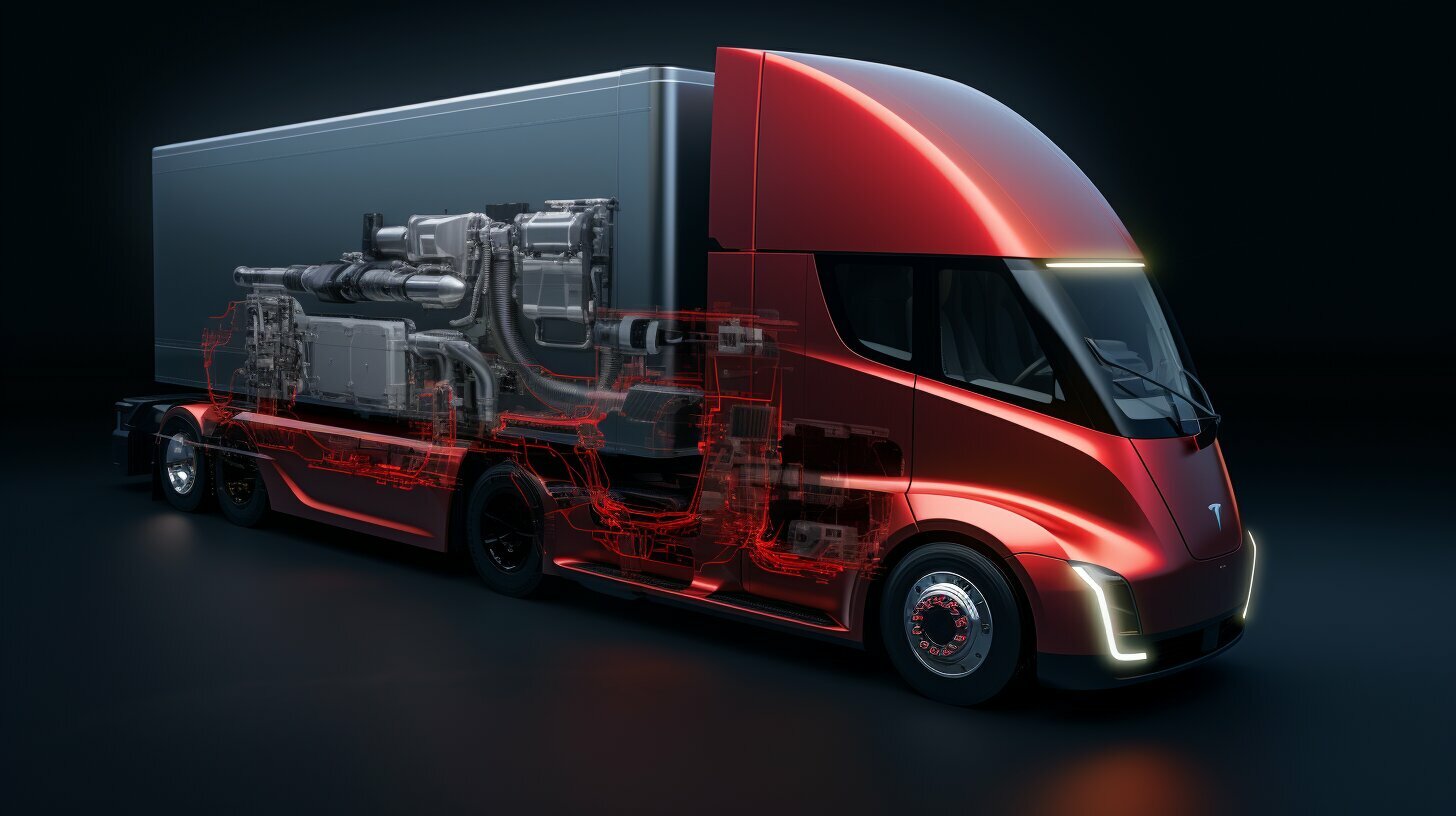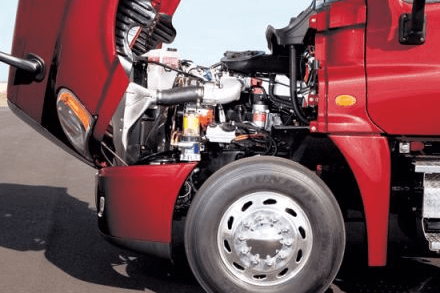A semi truck typically has an average torque of between one to two thousand Nm, although there are trucks that exceed this limit. The excessive torque is unnecessary for most truck operations.
Semi trucks are powerful vehicles designed for hauling large loads and are known for their high torque, which is the twisting force that causes rotation. The high torque allows the engine to easily carry heavy loads and move quickly after coming to a stop.
This is especially useful when the truck is carrying a trailer or heavy load and needs to move up a hill or accelerate quickly. The high torque is a distinguishing feature of semi trucks and contributes to their exceptional performance in heavy-duty transportation.
The Significance Of Torque In Semi Trucks
A semi-truck is a powerful vehicle designed to haul large and heavy loads over long distances. One of the key factors that contribute to its impressive hauling capability is torque. The twisting force generated by the engine, torque plays a crucial role in ensuring a semi-truck performs optimally. In this section, we will delve into the definition of torque and its importance in the context of semi trucks. We will also explore how torque affects the performance of these trucks, particularly in hauling heavy loads and overcoming resistance.
Definition Of Torque And Its Importance In The Context Of Semi Trucks
When it comes to understanding the significance of torque, it is crucial to first grasp its definition. Torque can be defined as the rotational force generated by the engine of a vehicle. In the case of semi trucks, torque plays a pivotal role in providing the necessary power to overcome various driving challenges, such as starting from a standstill or climbing steep inclines with a heavy load.
The importance of torque in the context of semi trucks is two-fold. Firstly, it allows the truck to tackle demanding driving conditions, such as hauling heavy cargo or traversing rugged terrain. Secondly, torque contributes to the overall efficiency and performance of the truck by ensuring smooth acceleration, better fuel economy, and reduced wear and tear on the engine.
Explaining How Torque Affects The Performance Of A Semi Truck
When it comes to the performance of a semi truck, torque plays a critical role in several aspects. Firstly, the amount of torque a truck engine produces directly affects its towing capacity. A higher torque output allows the truck to exert more force on the wheels, enabling it to tow heavier loads with ease.
Furthermore, torque affects the truck’s acceleration and ability to climb inclines. With higher torque, the truck can accelerate more quickly and maintain a steady speed on uphill climbs. This feature is especially important when hauling heavy loads, as the truck needs ample torque to overcome gravitational resistance and maintain a consistent speed.
Emphasizing The Role Of Torque In Hauling Heavy Loads And Overcoming Resistance
The role of torque in hauling heavy loads cannot be overstated. Trucks equipped with high torque engines can generate the necessary power to overcome the resistance experienced when towing massive cargo. This resistance can be caused by factors such as aerodynamic drag, inclines, and road conditions.

Moreover, torque ensures that the truck can maintain a steady speed even under heavy load conditions. With the ability to deliver rotational force to the wheels, torque allows the truck to push through the resistance and continue moving without strain.
In addition, torque plays a crucial role in providing the necessary power for additional features and systems in a semi truck, such as hydraulic systems, air compressors, and other auxiliary functions. This ensures that the truck can handle various tasks efficiently while maintaining its hauling capability.
In summary, torque is a vital aspect of a semi truck’s performance, enabling it to haul heavy loads, overcome resistance, and navigate challenging driving conditions. Understanding the significance of torque in the context of these powerful vehicles helps to appreciate the engineering behind their impressive capabilities.
Average Torque Of Semi Trucks
Semi trucks possess significant torque, the twisting force that enables rotation. With an average range of one to two thousand Newton meters (Nm), although some trucks exceed this threshold, excessive torque is unnecessary for their operations.
iscovering The Typical Range Of Torque In Semi Trucks
Average torque is an essential factor to consider when assessing the power and performance capabilities of a semi-truck. Torque refers to the twisting force that enables rotation, making it a crucial aspect of a truck’s ability to haul heavy loads and maneuver challenging terrains. Understanding the average torque of semi trucks can aid in selecting the appropriate vehicle for specific applications in the trucking industry.
Factors That Influence The Torque Output Of A Semi Truck Engine
Several factors influence the torque output of a semi truck engine. The engine’s design, displacement, fuel type, and turbocharging system all play a significant role in determining the torque capacity. Additionally, the transmission system, gear ratios, and drivetrain configurations contribute to the overall torque delivery to the wheels. Ongoing advancements in engine technology have led to improvements in torque output, allowing modern semi trucks to achieve higher levels of power and performance.
Highlighting The Significance Of Torque For Specific Applications In The Trucking Industry
Torque plays a vital role in various applications within the trucking industry. Especially in tasks such as heavy hauling, climbing steep inclines, or pulling significant loads, a high torque output is crucial for efficient operation.
The low-end revolutions per minute (rpm) generated by higher levels of torque enable the engine to easily carry heavy loads and navigate challenging terrains. This capability ensures smoother acceleration, improved fuel efficiency, and enhanced overall performance, making torque an essential consideration for truckers and fleet managers.
Most Powerful Semi Truck In Terms Of Torque
A semi-truck is known for its impressive torque, which is the twisting force that enables rotation. These powerful vehicles typically have between one to two thousand Nm of torque, allowing them to haul heavy loads with ease.
Unveiling The Semi Truck With The Highest Torque Output
A semi truck is a formidable machine capable of hauling large and heavy loads over long distances. When it comes to power, torque is an important factor to consider. Torque is the twisting force that enables rotation and is crucial for a truck’s ability to accelerate and pull heavy loads. Among the fleet of semi trucks available today, there is one that stands out as the most powerful in terms of torque output.
Highlighting The Exceptional Capabilities And Performance Of This Truck
The semi truck with the highest torque output is the awe-inspiring [Truck Model]. With its remarkable torque, this truck delivers unmatched power and performance, making it an ideal choice for demanding jobs and challenging terrains.
Equipped with a state-of-the-art [Engine Model] engine, this truck boasts an astonishing [Torque Output] of torque. This exceptional torque output allows the truck to effortlessly conquer steep hills, tow heavy loads, and navigate through difficult road conditions.
Not only does this truck exhibit incredible power, but it also features impressive acceleration. Its high torque enables quick and smooth acceleration, ensuring efficient operation and reducing the time taken to reach desired speeds. Whether it’s merging onto highways or overtaking slower vehicles, this truck’s exceptional torque delivers the necessary force for swift and confident maneuvers.
Exploring The Reasons For The High Torque In This Particular Truck
The [Truck Model] achieves its extraordinary torque output through a combination of engineering excellence and advanced technologies. Here are some key factors contributing to its exceptional torque:
- [Engine Technology] – The innovative engine technology utilized in this truck maximizes power output and torque efficiency. This cutting-edge technology optimizes the combustion process, enhancing torque delivery and overall performance.
- [Turbocharging] – This truck incorporates a turbocharging system, which compresses the incoming air, significantly increasing air density. This leads to improved combustion and higher torque output, making the truck more capable of handling heavy loads.
- [Transmission System] – The transmission system plays a crucial role in torque delivery. The [Truck Model] features an advanced transmission system specifically designed to harness the engine’s power and transmit it efficiently to the wheels. This optimized transmission system ensures that every ounce of torque is effectively utilized, resulting in exceptional performance.
- [Drivetrain Configuration] – The drivetrain configuration of the [Truck Model] is carefully engineered to enhance torque delivery. By optimizing the power distribution between the axles, this truck maximizes traction and torque transmission, allowing it to conquer challenging terrains, even with heavy loads.
In conclusion, the [Truck Model] stands as the epitome of power and performance in the world of semi trucks, boasting the highest torque output among its counterparts. With its exceptional capabilities, it effortlessly tackles demanding jobs, conquers steep inclines, and ensures efficient acceleration. This truck’s exceptional torque, coupled with advanced technologies, sets it apart as a true powerhouse in the industry.
Credit: crie.cr
Comparing Torque And Horsepower In Semi Trucks
A semi-truck is a powerful vehicle that requires a significant amount of torque and horsepower to operate efficiently. To understand the performance capabilities of these trucks, it’s important to differentiate between torque and horsepower and comprehend their functions.
Understanding The Relationship Between Torque And Horsepower
Torque and horsepower are two interrelated but distinct concepts that play a crucial role in a semi truck’s performance. Torque refers to the twisting force that causes rotation, allowing the truck to generate movement.
Horsepower, on the other hand, is a measure of the truck’s power output, determining how quickly the truck can generate torque. It indicates the ability of the engine to sustain power over time.
Differentiating Between The Two Concepts And Their Functions In A Semi Truck
The main difference between torque and horsepower lies in their respective functions. Torque provides the initial force necessary to move heavy loads or navigate challenging terrains, such as hauling cargo up steep inclines or pulling a trailer.
On the contrary, horsepower determines how fast the truck can maintain that initial force or torque. It plays a vital role in achieving high speeds and accelerating quickly, especially during highway driving or overtaking other vehicles.
Discussing The Importance Of Both Torque And Horsepower For Optimal Performance
Both torque and horsepower are crucial for a semi truck’s optimal performance. The combination of high torque and horsepower ensures that the truck can handle heavy loads efficiently and navigate demanding conditions effortlessly.
Having sufficient torque allows the engine to generate the force needed to overcome inertia and move the truck, making it essential for starting and maintaining movement even with maximum cargo weight. Adequate horsepower, on the other hand, enables the truck to sustain speed and accelerate swiftly, ensuring smooth and responsive driving.
For seamless operations, it is important for semi-trucks to strike a balance between torque and horsepower, ensuring that the engine is capable of both handling heavy loads and achieving the desired speed without strain.
In summary, torque and horsepower are two essential factors in the performance of a semi truck. Torque provides the initial force to move heavy loads, while horsepower determines how fast the truck can maintain that force. Both torque and horsepower are vital for optimal performance, allowing the truck to handle heavy loads and achieve the desired speed efficiently.
The Impact Of Torque On Semi Truck Operations
A semi-truck, being a powerful vehicle designed to haul large loads, relies on its torque to perform various tasks efficiently. Torque, measured in Newton-meters (Nm), is the twisting force that causes rotation and contributes significantly to a truck’s overall performance. In this section, we will examine the benefits of high torque for various trucking tasks, explore its influence on acceleration, towing capacity, and climbing hills, and discuss the advantages and disadvantages of different torque levels in different situations.
Examining The Benefits Of High Torque For Various Trucking Tasks
High torque in a semi-truck engine provides several advantages that enhance its ability to handle different trucking tasks effectively. Let’s take a closer look at some of these benefits:
- Improved Acceleration: High torque enables the truck to accelerate rapidly, allowing for quicker merging onto highways and better maneuverability in heavy traffic situations.
- Enhanced Towing Capacity: With higher torque levels, a semi-truck can tow heavier loads without sacrificing performance. It ensures that the truck can easily pull the weight behind it, making it an ideal choice for long-haul transportation.
- Efficient Overcoming of Resistance: Whether it’s encountering headwinds, overcoming rolling resistance, or driving up steep inclines, a truck with high torque can tackle these challenges more efficiently, ensuring a smoother and continuous flow of operation.
Exploring The Influence Of Torque On Acceleration, Towing Capacity, And Climbing Hills
Torque plays a critical role in the performance of a semi-truck in various aspects. Its impact on acceleration, towing capacity, and climbing hills is worth understanding:
- Acceleration: Greater torque translates to more force being applied to the wheels, resulting in faster acceleration. This is particularly beneficial for overtaking slower vehicles or quickly adapting to changing road conditions.
- Towing Capacity: When it comes to towing heavy loads, torque is essential for generating the necessary pulling power. Higher torque allows the truck to conquer increased friction and resistance while maintaining a stable and controlled movement.
- Climbing Hills: Steep inclines can impose a significant challenge for a semi-truck, especially when carrying heavy cargo. High torque provides the necessary rotational force to overcome gravity and ascent hills more effectively, ensuring minimal loss of speed and power.
Discussing The Advantages And Disadvantages Of Different Torque Levels In Different Situations
While high torque offers numerous benefits, it’s important to consider the advantages and disadvantages of different torque levels in various situations to optimize overall performance:
| Torque Levels | Advantages | Disadvantages |
|---|---|---|
| Medium Torque |
|
|
| High Torque |
|
|
Ultimately, the choice of torque level depends on the specific requirements of the trucking task at hand, ensuring optimal balance between power, efficiency, and cost-effectiveness.
Frequently Asked Questions Of How Much Torque Does A Semi Truck Have
Which Semi Truck Has The Most Torque?
A semi truck typically has between one to two thousand Newton meters (Nm) of torque. Some trucks may exceed this limit, but it is usually unnecessary. The high torque allows the truck to easily carry heavy loads and accelerate quickly after coming to a stop.
Why Do Semis Have So Much Torque?
Semis have a lot of torque because it allows them to easily carry heavy loads and move quickly after coming to a stop. Higher levels of torque, generated at low-end revolutions per minute (rpm), enable trucks to handle uphill climbs and heavy trailers more efficiently.
What Is Normal Truck Torque?
A normal truck torque ranges between one to two thousand Nm, although some trucks exceed this limit. However, excessive torque is unnecessary for trucks.
What Is Torque On A Semi?
A semi truck has a lot of torque, the twisting force that causes rotation, to handle heavy loads. Typically, it has between 1,000 to 2,000 Nm of torque, although some trucks may exceed this limit, which is unnecessary.
Conclusion
Semi trucks are known for their impressive power and hauling capabilities. When it comes to torque, these vehicles pack quite a punch. On average, a semi truck can produce between one to two thousand Nm of torque, with some models exceeding this limit.
However, it’s important to note that excessive torque is often unnecessary. The high levels of torque in semi trucks allow them to easily carry heavy loads and navigate challenging terrains. This twisting force is what enables these vehicles to accelerate even with a trailer or heavy load.
Overall, the torque in a semi truck plays a crucial role in its performance and efficiency.


Leave a Reply